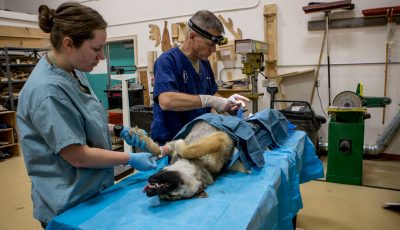Word of the day: mugwort
As you know, I ain’t no scholar. I’ve kept my book learning to an absolute minimum. Thanks to my chronic truancy, life is a never-ending Easter egg hunt, where little details that would bore broader minds are enough to keep me merrily engaged for hours. So here’s a thought I’ll share with you today: mugwort.
Yeah, that’s right, I said mugwort.
This might be only time in your natural-born life that you read an article on mugwort. But as for me, well, I keep crossing paths with it. And that’s quite a long path, by the way, which stretches from my beach chair all the way back to some misty lore of the ancient East.
This thing got started a few years ago when I was trying to fashion a Chinese name for myself, which was one requirement of a class I was taking. In an attempt to mimic my American name phonetically, one component of my early attempts at a Chinese name translated as “mugwort.”
I had no idea what mugwort is. But it didn’t ring sweetly in my ear. It sounded like an unsightly lump that might grow on your face or something. No, thanks. I scrapped that name and went back to the drawing board.
So the mugwort trail went cold. But it didn’t stay cold forever, and I crossed it again when following another exotic mystery.
Here’s how that little caper got rolling: I was sitting in my beach chair with my crayons, practicing writing the Chinese characters for “acupuncture.” That’s a two-character word in Chinese. The first character is, logically enough, “needle.” But the second part is mysterious: It means “moxibustion.”
Moxi-what?
Egads, this is why I avoid looking things up. Whenever I look something up, I just have to look up what’s behind the explanation for what I was looking up. It’s a never-ending tail chase.
As it turns out, moxibustion is an ancient Asian medical practice. A special powder is burned in order to apply heat to the skin in medically-strategic places. There are various ways of doing this, including actually putting it on the skin for it to burn; using a cigar-shaped arrangement of the powder to transmit the heat to the skin; or burning the powder atop an acupuncture needle and letting the needle transmit the heat to the skin. Moxibustion is still practiced and products for it are still sold. It’s often combined with acupuncture.
And this is where we pick up the mugwort trail again. Mugwort is what they make the moxibustion powder from. So mugwort is a good thing, or at least a thing that does good things.
Hey, that’s not such a bad concept to base a name on. Maybe I should have stuck with it as part of my Chinese name.
This pretty much closes the chapter on the little mugwort caper, but as for acupuncture itself, it’s enjoying more attention in the West. For example, it is provided at some Veterans Administration hospitals. Some health insurance plans now cover it. And the MD Anderson Cancer Center in Houston, regarded as the world’s top cancer hospital, also offers acupuncture; as far as I know they don’t use it as a treatment for cancer itself, but they use it to treat related issues such as fatigue and pain.
So acupuncture is not some quaint relic of traditional Chinese medicine. It is, by contrast, being used in the most modern of settings. However, I think that modern settings, at least in the West, often use heat lamps instead of actual moxibustion when they want to warm things up.
Acupuncture was merely a linguistic matter to me until a surgeon of my acquaintance told me, as just one of those random things to talk about, that she gets acupuncture treatments. She is one of the smartest and shrewdest people I know. Her endorsement of the technique settles the matter of its efficacy in my mind. But I’m not trying to influence anyone else on the gig; I just wanted to point out that it’s certainly a relevant topic these days, and, getting back to the language aspect of things, it’s a word you’re likely to encounter in the west Pacific and beyond.
It’s certainly a very common word in Chinese script, you’ll see it all over the place in Chinese business districts and their signs.
So that’s the story, or part of it, anyway, of mugwort, moxibustion, and acupuncture.
Now that we’ve wrapped that up, I’m awaiting the next conceptual Easter egg that will keep me entertained. After all, I’ve got my beach chair and I’ve got my crayons, so life is just one adventure after another.



























